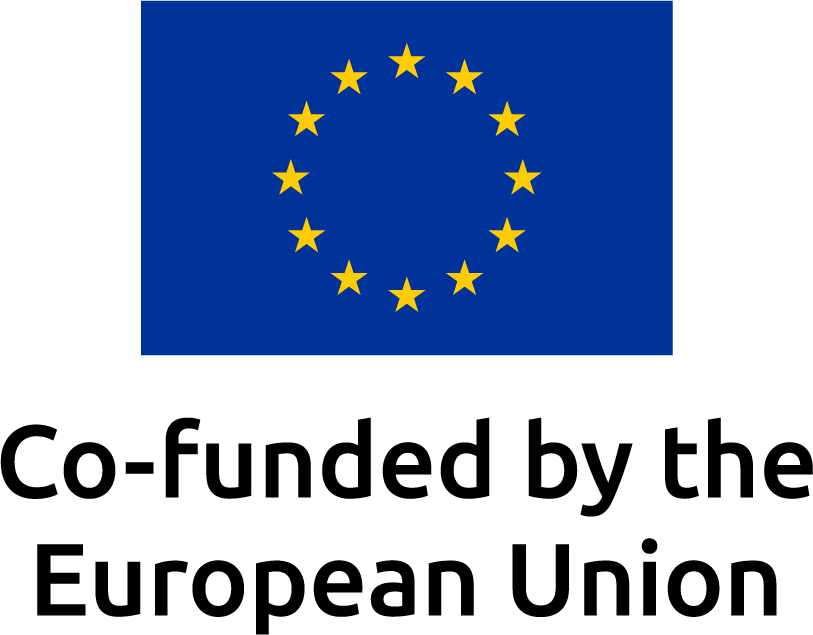The Benefits of Bionic Hand: Transforming Lives
The Power to Do More Starts Here
Picture this: the warmth of a coffee mug in your palm, the satisfying tap of keys beneath your fingers, the instinctive turn of a doorknob as you step outside. These everyday moments are so easy to take for granted, until they’re no longer easy. For many living with upper-limb loss, these simple actions become daily challenges. But that’s where bionic hand technology steps in and changes the story for those who have suffered a lost limb .
We’re in a new era now, one where prosthetics aren’t just tools, they’re lifelines. Bionic hands blend cutting-edge engineering with human-focused design, giving people more than just movement. Bionic hands as a form of bionic limb offer possibilities, independence, and dignity.
The new generation of bionic hands incorporates innovative materials, advanced control systems, and modern structural designs to restore functionality and independence for users, reflecting the advancements seen in today's prosthetics .
Let’s walk through how these remarkable devices, alongside advanced surgical techniques, are rewriting what it means to live with limb difference, and why that matters to all of us.
Understanding the Human Hand
The human hand is nothing short of a biological masterpiece. With 27 bones, 21 degrees of freedom, and 37 muscles working in harmony, our hands are capable of an astonishing range of movements, from the most delicate tasks, like threading a needle or playing a violin, to powerful actions such as gripping a heavy suitcase. This intricate structure allows us to interact with the world in ways that are both subtle and strong, adapting instantly to whatever daily life demands.
But it’s not just about movement. The human hand is packed with nerve endings that deliver rich sensory feedback, letting us feel the texture of fabric, the warmth of a loved one’s touch, or the pressure needed to hold a fragile glass. This sensory information is essential for performing tasks with a high degree of precision and confidence.
For those designing prosthetic hands, replicating the complexity and versatility of the human hand is both a challenge and a guiding goal. Modern prosthetic hands strive to mimic not only the range of movements and grip patterns but also the ability to perform delicate tasks and respond to the user’s intent. By understanding the remarkable capabilities of the human hand, including its muscle contractions, engineers and clinicians can create prosthetic devices that restore independence and empower users to fully engage in daily life.
What Is a Bionic Hand or Prosthetic Limb?
At its core, a bionic hand is a high-tech prosthetic designed to restore functionality for individuals with upper-limb loss. A bionic hand, which utilizes brain control, is a type of prosthetic hand and falls under the broader category of bionic prosthetics. Specifically, many bionic hands are myoelectric prostheses, meaning they use electrical signals from the muscles in the residual limb to drive movement. In simpler terms, the user thinks about moving, and the hand responds.
But there’s much more going on beneath the surface. The bionic hand is an advanced electronic device that responds to muscle signals, using robotics, smart sensors, and customizable software to adapt to each user’s needs, routines, and goals. They’re a far cry from traditional prosthetics and artificial limbs , which often lacked responsiveness or flexibility.
Modern bionic hands offer fluid movement, precision, and a more natural user experience. As a type of bionic prosthetic limb, they’re intuitive, intelligent, and built to help people reconnect with the world around them.
The Role of the Nervous System
Behind every movement of the human hand lies the remarkable coordination of the nervous system. The brain acts as command central, sending electrical signals through nerves to the muscles in the hand, orchestrating everything from a gentle wave to a firm handshake. At the same time, the nervous system receives a constant stream of sensory feedback, allowing us to adjust our grip, sense temperature, and respond to our environment in real time.
This intricate communication network is the inspiration for today’s most advanced prosthetic limbs and bionic hands. By harnessing electrical signals from the user’s remaining muscles, through technologies like electromyography (EMG), modern prosthetic hands can interpret the user’s intent and translate it into precise, natural movements. For those seeking even greater control, brain-computer interfaces (BCIs) are emerging, allowing direct communication between the brain and the prosthetic device.
The integration of machine learning algorithms and artificial intelligence is taking prosthetic technology to new heights. These systems can learn from the user’s unique movement patterns, refining control and adapting to individual needs. As a result, bionic hands and robotic prosthetics are becoming more intuitive, responsive, and capable of restoring independence for people with upper limb loss, while developing ways to enhance user experience .
Sensory feedback technologies are also evolving, giving users a more immersive experience by simulating the sense of touch or pressure. This not only enhances control but also helps users feel more connected to their artificial limbs, making daily tasks feel more natural.
While challenges remain, such as improving the seamlessness of control, enhancing sensory feedback, and making these technologies more accessible, the future of prosthetic devices is bright. With ongoing advancements in biomedical engineering, artificial intelligence, and machine learning, bionic hands and limbs are poised to offer users a high degree of control, precision, and freedom, truly transforming what’s possible after limb loss.
Improved Mobility and Functionality

Mobility isn’t just about movement, it’s about freedom. Bionic hands are advanced prostheses that allow people to regain that freedom, making it easier to navigate life with confidence by allowing users to perform daily tasks that would otherwise be difficult or impossible.
From fastening buttons and zipping jackets to holding tools and preparing meals, tasks that were once frustrating can become second nature again. Devices like the Zeus hand are examples of modern prosthesis technology, offering up to 17 unique grip patterns that can be tailored to how someone lives their day-to-day life.
In contrast, body powered prosthetics are a type of prosthesis that use a simple pulley system operated by the upper arm and arms. These prostheses are known for their durability and are especially suitable for manual labor, allowing users to perform practical tasks where ruggedness and reliability are essential.
Whether it’s the powerhouse Zeus V1 with an impressive 152N grip strength, or the compact and agile Zeus S, the strongest bionic hand in its size class at 120N, both are engineered for real-life performance. From typing and lifting groceries to flipping through a book, it’s the small, thoughtful details that unlock their full potential.
Enhanced Grip and Dexterity
Let’s talk about control. True control.
Bionic hands are no longer just about grasping, they’re about finesse. With modular finger technology and responsive motors, users can achieve precise finger movements, allowing them to pick up a pen, handle fragile items, or flip through a wallet with surprising ease.
Take Zeus S, for instance. It’s designed to switch grips faster and more precisely, helping users transition from one action to the next with minimal effort. Users are controlling the hand through advanced systems that enable different grips and actions tailored to their needs. Plus, with a touchscreen-friendly index finger, everyday tech like smartphones and tablets stays easily accessible.
The result? Not just better hand use, but a stronger sense of connection to the world.
Comfort and Customization
A one-size-fits-all approach simply doesn’t work in prosthetics. That’s why bionic hands like Zeus are designed to fit the user's body and accommodate different bodies, ensuring a comfortable and natural integration with each individual.
Built with modular parts, these hands can be quickly repaired, customized, or upgraded without the need for full replacements. For instance, Zeus S weighs just 480g and is ideal for users who want something lighter and more agile. Meanwhile, Zeus V1 brings powerful grip strength and a more robust structure for heavier tasks.
The Zeus V1 offers two wrist configurations, EQD for quick disconnects and Flex for enhanced mobility, giving users and clinicians the ability to tailor the hand for different lifestyles and activity levels. The Zeus S, for now, comes with the EQD wrist only, keeping things simple and streamlined. While silicone skin gloves aren’t yet supported, the mechanical design of both hands focuses on function and comfort, making them feel like a natural fit for daily life.
Technological Innovation and Advancements in Machine Learning
Bionic hands aren’t just smart, they’re evolving.
The evolution of bionic devices, including bionic limbs, bionic prosthetic hands, and bionic prostheses, is transforming the landscape of prosthetic technology. High tech prosthetics and robotic hands now incorporate advanced control systems, sensory feedback, and AI integration to closely mimic natural hand movement and sensation. Mechanical engineering and prosthetic design play a crucial role in driving these innovations, improving durability, dexterity, and user experience. While artificial hands and robots are both at the forefront of research, there is a clear distinction between robots used for experimental purposes and practical prosthetic devices designed for everyday use.
Thanks to platforms like Aether Digital, users and clinicians can now connect through a digital ecosystem that brings care into the 21st century. Clinicians can monitor performance, track grip cycles, and even adjust hand settings remotely, all without a trip to the clinic.
This kind of connectivity ensures every user gets a hand that keeps learning, adjusting, and improving. As technology grows more adaptive and intuitive, users benefit from faster response times, smarter feedback, and more tailored experiences.
It’s not just about engineering, it’s about empowerment.
Psychological and Emotional Benefits of Bionic Hands
Rebuilding function is one thing. Rebuilding confidence through innovative surgical procedures ? That’s life-changing.
Losing a limb often affects more than the body, it impacts a person’s sense of identity and independence. But when people start doing things for themselves again, it restores a kind of inner strength that’s hard to describe.
Bionic hands like Zeus play a vital role in that emotional recovery. They give users the ability to show up, at work, in social settings, in moments that matter and do so with confidence.
And when users feel empowered, that energy spreads. Relationships deepen. Self-esteem rises. Mental health improves. These devices may be mechanical, but the transformation they spark is deeply human.
Medical and Healthcare Benefits of Bionic Hands
From a clinical perspective, bionic hands are game-changers.
For patients recovering from injury or managing congenital conditions, these hands support muscle activation, fine motor skill development, and ongoing rehabilitation. They also help clinicians gather real-time data, enabling better, more personalized care.
With tools like Aether Digital Platform, therapists can track EMG activity, monitor usage, and adjust settings with just a few clicks. No guesswork. No unnecessary visits. Just smarter care, from anywhere.
This makes the therapy journey smoother, more efficient, and ultimately more effective, for everyone involved.
Cost and Accessibility
Let’s be honest, advanced technology often raises questions about affordability. And while bionic hands do represent a significant investment, devices like the Zeus hand are among the most affordable high-functioning myoelectric solutions on the market.
Even better? Many countries and insurance providers are recognizing the value these hands bring to long-term health and independence. In the U.S., for instance, insurance coverage is available, helping offset costs.
Plus, with Zeus hands being fully repairable, Zeus V1 in under 30 minutes, Zeus S in under 10, users benefit from fewer replacements, lower downtime, and more peace of mind.
A Quick-Scan Recap: Why Bionic Hands Matter
Here’s a snapshot of what makes bionic hands so powerful:
- Real-World Functionality
- Bionic hands are a type of hand prosthesis and part of the broader category of hand prostheses, designed to replace lost body parts for individuals who have lost a limb.
- Perform complex tasks like pinching, typing, or lifting to support daily living and independence.
- Customize up to 17 grip patterns
- Smart Technology Integration
- Real-time adjustments via Aether Digital Platform
- Touchscreen compatibility
- Personalized Comfort and Modularity
- Lightweight, user-friendly designs
- Easy repairs and modular components
- Emotional Empowerment
- Boost confidence and independence
- Strengthen mental and social well-being
- Clinical and Healthcare Support
- Supports therapy and rehabilitation
- Enables remote, data-driven care
- Training and Usability
- Unlike traditional hand prostheses that often require extensive training, modern bionic hands are designed for intuitive use, making adoption easier for users.
The Future Is in Your Hands
Bionic hands and artificial hands aren't science fiction anymore, they’re changing real lives in real time.
From the strength and resilience of Zeus V1 to the lightweight precision of Zeus S, Aether Biomedical’s innovations are proving what’s possible when technology meets purpose.
This is more than a prosthetic, it’s a tool for independence, dignity, and growth. And whether you’re a clinician, a patient, or a loved one, we believe the future should be something you can reach for and grasp firmly.
Frequently Asked Questions
What are the benefits of using a bionic hand?
They offer grip variety, comfort, and intuitive muscle-driven movement.
How do bionic hands improve quality of life?
By restoring autonomy in everyday tasks and building emotional and social confidence.
What makes bionic hands different from regular prosthetics?
They feature robotics, smart sensors, and modular designs for better control and adaptation.
Can a bionic hand help restore natural hand functions?
While not identical, they replicate many essential motions like pinching and lifting.
Is there emotional support for users of bionic hands?
Absolutely. Regaining ability often improves mental health, confidence, and social connections.
What are the future advancements in bionic hand technology?
Smarter sensors, improved AI, and even more seamless integration into daily life are on the horizon.










